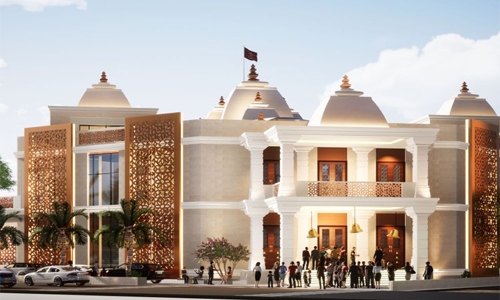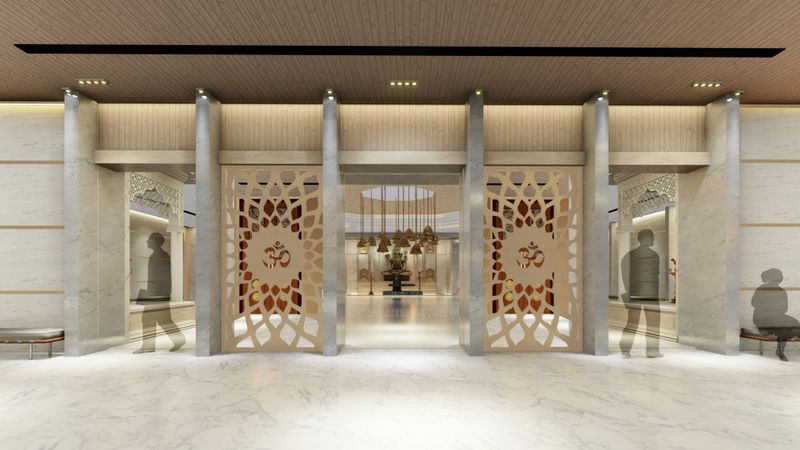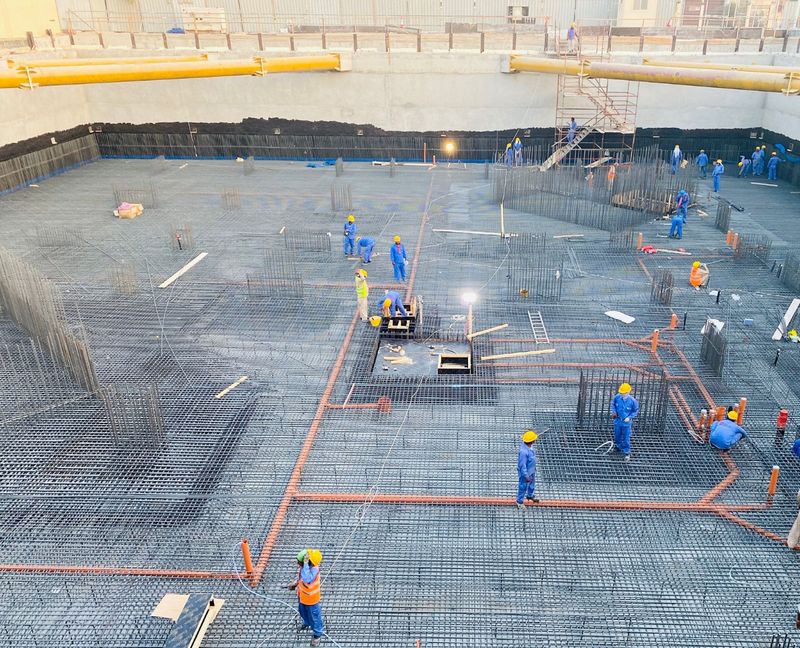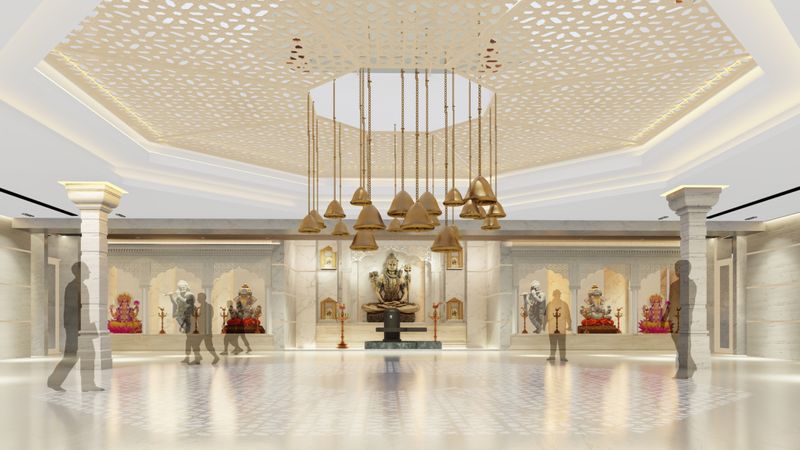Majestic Hindu Temple to open doors by last quarter of 2022 in Dubai
Gulf News | Dubai
The Daily Tribune – www.newsofbahrain.com
A majestic new Hindu Temple will be open to Hindus of all sects by Diwali 2022 in Dubai. The Hindu Temple, that is coming up adjacent to the Guru Nanak Singh Darbar, Jebel Ali, is an extension of the Sindhi Guru Durbar in Bur Dubai, according to the Community Development Authority, Dubai.
The foundation stone of the temple was laid in a quiet ceremony amid the COVID-19 pandemic on August 29, 2020, and work has been going on steadily to meet the 2022 deadline.
Speaking to Gulf News, Raju Shroff, one of the trustees of the Hindu Temple, Dubai, thanked the spirit of tolerance and magnanimity of the rulers. “This temple bears testimony to the open-mindedness of the leaders of the UAE and Dubai. The journey from a quaint one-room temple in the 1950s to the 70,000 square feet, purpose-built Temple and Community Centre could not have been possible without the generosity and open-mindedness of the Rulers of the UAE, and the overwhelming support of CDA, Dubai.”
Architectural details
The temple intends to display a subtle blend of contemporary Hindu and Arabic elements. It will be with the Shiva monolith being placed many meters above the foundation stone site in the prayer hall.
The temple is an east-facing structure, designed as per norms of Indian Temple Architecture and Hindu Vastu Shastra. The actual structure will cover 25,000 sq ft. of land. The built-up area of the temple stands at a spacious 75,000 sq ft. The temple structure includes two basements, a ground floor and first floor. The total height of the temple is 24 metres, including the top of the shikhar (dome). The height of the temple itself is 18 metres. High ceilings of 5 metres allow the indoor areas to feel comfortably roomy.
A contemporary lobby has been provided to welcome visitors on the ground floor that leads to the expansive 4,000 square feet banquet hall that can accommodate a gathering of 775 people approximately, and a comparatively smaller 1,000 square ft. multipurpose room for events up to 100 people.
The first floor will the main 5,000 square feet well-lit prayer hall that can accommodate up to 1,500 people at a time. This opens up to a huge 2,500 sq ft. terrace area to conduct ceremonies that require the fire (havan) element.
Arabian elements
The mashrabiya screens on the façade take inspiration from traditional Arabian architecture. These screens act as a shading device while also adding a beautiful aesthetic to the façade of the building. The stone cladding on the facade is of Saudi/Jordanian stone, which once again pays homage to the traditional architecture of the Arab region.
Traditional temple elements
Besides, designs of traditional temples of India and the motifs from these temples have been incorporated. The columns on the façade and interior take inspiration from the traditional columns of the Somnath Temple in Gujarat, India. The main Dome in the structure is inspired by the Nagara style of Hindu Temple Architecture found predominantly in North India.
A skylight for natural light
A structural highlight that cannot be missed is an octagonal skylight at the ceiling of the prayer hall that allows for natural light and views of the shikhar dome and sky above. Traditional temple bells that promise to invoke the harmonious Indian temple sounds as the rungs will be suspended from this skylight.
The temple design allows for ample natural light within all its spaces and will facilitate natural ventilation through its main prayer hall. This has been achieved by placing doors and openings to make full use of the prevailing winds and passively cool the building.
A blend of contemporary, Hindu and Arabian architectural elements have been blended subtly to enhance the aesthetic experience of design and spirituality
What the Hindu diaspora can expect?
The temple aims to be a place of worship encompassing all sects of Hinduism. It will have 11 deities installed in separate chambers in the temple, representing the various faiths of Hindus across India and the world. At the centre sits Lord Shiva, placed in the Garbha Griha (the central chamber) below the main dome.
Ceremonies that require the fire element (havan) can be safely conducted on the open-to-air terrace adjacent to the main prayer hall. The terrace is an expansive 2,500 square feet area that makes conducting such ceremonies convenient during any season. Once open, worshippers can use the 4,000 square feet banquet hall to host cultural events, religious gatherings and community get-togethers.
Besides, the 1,000 square feet multipurpose hall can be used to conduct lessons in religious scriptures such as the Bhagvad Gita lessons, traditional dance classes, music and art workshops and other community development activities.
Parking facilities and shopping kiosks
The parking facility makes hosting events even more convenient. Similar to the existing temple area in Bur Dubai, worshippers will have the convenience of having kiosks and shops offering flowers and puja items for sale within the temple premises.
Related Posts




